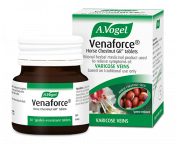Introduction
Varicose veins are damaged veins. Although they may be found anywhere in the body, varicose veins are most common in the calves and thighs.
The word ‘varicose’ comes from Latin and means ‘dilated’ or ‘larger’. Varicose veins are enlarged or swollen veins, visible through the skin as blue or purple swellings. They may also have a bulging, lumpy or twisted appearance. The thickened or swollen parts of veins are known by doctors as varicosities.
Varicose veins occur when veins lose their elasticity, become stretched or swollen. This leads to leakage of valves found inside veins, responsible for regulating the normal flow of blood towards the heart.
Who develops varicose veins?
It is said that over 3 in 10 adults will develop varicose veins at some point in their lives. Other estimates are even higher, suggesting that 40% of men and 32% of women aged 18 to 64 years suffer from varicose veins.
Some people are more prone to the condition than others. Those who spend much of their day sitting, and in particular standing, are more likely to develop the condition. In addition, varicose veins can run in families, especially in the female line.
The most common cause of varicose veins in young women is pregnancy. It is thought that about 40% of pregnant women experience varicose veins, although these usually disappear after birth of the child.
What are the symptoms?
The symptoms of varicose veins vary from person to person. Usually the first signs are that affected veins becoming more noticeable through the skin. With time, they appear swollen, and may become itchy or slightly tender to touch.
A feeling of aching, heaviness or tiredness may develop in the calves or thighs. Other symptoms of varicose veins include swollen ankles, burning sensation in the legs, muscle cramp or itching of the skin.
Although the symptoms of varicose veins are unsightly and irritating, the condition tends not to be serious. However, serious complications can develop and these include varicose eczema, skin ulcers, thrombosis (abnormal clotting) and bleeding. If this is the case, you should seek medical attention.
Itchy varicose veins
A symptom of varicose veins you may experience is itchiness around the swollen vein. This occurs because blood leaks from the swollen vein, irritating surrounding tissues. If your varicose veins itch, you are more likely to develop complications. Many of these can, and should be treated, so it is worth making an appointment with your doctor.
Varicose veins in other parts of the body
Although varicose veins are most commonly found in the legs, they may appear elsewhere in the body.
- Haemorrhoids (or piles) are varicose veins in the anus and rectum – the lowest part of the digestive tract where faeces leave. Although not often serious, they can be very painful. You may notice streaks of blood as you try to pass stool
- Pregnant women may notice varicose veins in their legs but sometimes, varicose veins in the vulva or vagina, as the baby puts pressure on the pelvic region, restricting blood flow
- Varicose veins may also be found in the oesophagus (or gullet), the tube which connects your mouth to your stomach. This is known as liver cirrhosis and is usually caused by scarring in the liver resulting from hepatitis infection or excessive alcohol consumption
- Up to 1 in 7 men develop varicose veins in the scrotum or testicles. They are not usually problematic and you may not notice any symptoms.
Can varicose veins be prevented or treated?
There are many measures you can take to help prevent varicose veins from developing or worsening. Most of these involve improving your circulation with regular exercise and eating healthily.
Treatment of varicose veins include conventional methods such as pressure stockings, lasers or, in severe cases, surgery. Additionally, many people find relief from using herbal remedies, in particular Horse Chestnut seed extracts, available in tablet form, or as a gel.
Should I go to the doctor?
The diagnosis of varicose veins is often clear as they are usually visible under the skin. However, there may be certain circumstances where you experience some of the symptoms of varicose veins, but are not sure if you have the problem. As with any unexplained symptoms, you should seek the advice of your doctor.
In addition, speak to your doctor if:
- You have severe pain, discomfort or swelling in your legs
- The skin over the varicose vein becomes painful or irritated
- You develop an ulcer (break in the skin)
- Your varicose vein bleeds.








